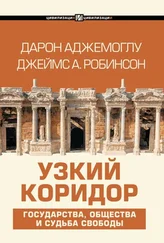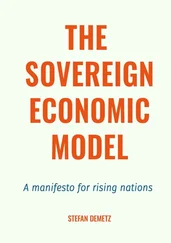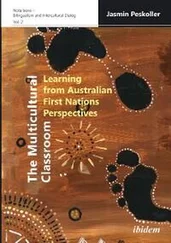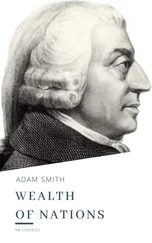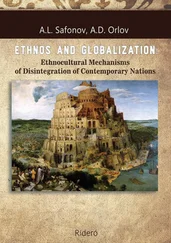Many expected the worst practices of colonial rule in sub-Saharan Africa to stop after independence, and the use of marketing boards to excessively tax farmers to come to an end. But neither happened. In fact, the extraction of farmers using marketing boards got much worse. By the mid-1960s, the farmers of palm kernels were getting 56 percent of the world price from the marketing board; cocoa farmers, 48 percent; and coffee farmers, 49 percent. By the time Stevens left office in 1985, resigning to allow his handpicked successor, Joseph Momoh, to become president, these numbers were 37, 19, and 27 percent, respectively. As pitiful as this might sound, it was better than what the farmers were getting during Stevens’s reign, which had often been as low as 10 percent—that is, 90 percent of the income of the farmers was extracted by Stevens’s government, and not to provide public services, such as roads or education, but to enrich himself and his cronies and to buy political support.
As part of their indirect rule, the British had also stipulated that the office of the paramount chief would be held for life. To be eligible to be a chief, one had to be a member of a recognized “ruling house.” The identity of the ruling houses in a chieftaincy developed over time, but it was essentially based on the lineage of the kings in a particular area and of the elite families who signed treaties with the British in the late nineteenth century. Chiefs were elected, but not democratically. A body called the Tribal Authority, whose members were lesser village chiefs or were appointed by paramount chiefs, village chiefs, or the British authorities, decided who would become the paramount chief. One might have imagined that this colonial institution would also have been abolished or at least reformed after independence. But just like the marketing board, it was not, and continued unchanged. Today paramount chiefs are still in charge of collecting taxes. It is no longer a hut tax, but its close descendant, a poll tax. In 2005 the Tribal Authority in Sandor elected a new paramount chief. Only candidates from the Fasuluku ruling house, which is the only ruling house, could stand. The victor was Sheku Fasuluku, King Suluku’s great-great-grandson.
The behavior of the marketing boards and the traditional systems of land ownership go a long way to explain why agricultural productivity is so low in Sierra Leone and much of sub-Saharan Africa. The political scientist Robert Bates set out in the 1980s to understand why agriculture was so unproductive in Africa even though according to textbook economics this ought to have been the most dynamic economic sector. He realized that this had nothing to do with geography or the sorts of factors discussed in chapter 2 that have been claimed to make agricultural productivity intrinsically low. Rather, it was simply because the pricing policies of the marketing boards removed any incentives for the farmers to invest, use fertilizers, or preserve the soil.
The reason that the policies of the marketing boards were so unfavorable to rural interests was that these interests had no political power. These pricing policies interacted with other fundamental factors making tenure insecure, further undermining investment incentives. In Sierra Leone, paramount chiefs not only provide law and order and judicial services, and raise taxes, but they are also the “custodians of the land.” Though families, clans, and dynasties have user rights and traditional rights to land; at the end of the day chiefs have the last say on who farms where. Your property rights to land are only secure if you are connected to the chief, perhaps from the same ruling family. Land cannot be bought or sold or used as collateral for a loan, and if you are born outside a chieftaincy, you cannot plant any perennial crop such as coffee, cocoa, or palm for fear that this will allow you to establish “de facto” property rights.
The contrast between the extractive institutions developed by the British in Sierra Leone and the inclusive institutions that developed in other colonies, such as Australia, is illustrated by the way mineral resources were managed. Diamonds were discovered in Kono in eastern Sierra Leone in January 1930. The diamonds were alluvial, that is, not in deep mines. So the primary method of mining them was by panning in rivers. Some social scientists call these “democratic diamonds,” because they allow many people to become involved in mining, creating a potentially inclusive opportunity. Not so in Sierra Leone. Happily ignoring the intrinsically democratic nature of panning for diamonds, the British government set up a monopoly for the entire protectorate, called it the Sierra Leone Selection Trust, and granted it to De Beers, the giant South African diamond mining company. In 1936 De Beers was also given the right to create the Diamond Protection Force, a private army that would become larger than that of the colonial government in Sierra Leone. Even so, the widespread availability of the alluvial diamonds made the situation difficult to police. By the 1950s, the Diamond Protection Force was overwhelmed by thousands of illegal diamond miners, a massive source of conflict and chaos. In 1955 the British government opened up some of the diamond fields to licensed diggers outside the Sierra Leone Selection Trust, though the company still kept the richest areas in Yengema and Koidu and Tongo Fields. Things only got worse after independence. In 1970 Siaka Stevens effectively nationalized the Sierra Leone Selection Trust, creating the National Diamond Mining Company (Sierra Leone) Limited, in which the government, effectively meaning Stevens, had a 51 percent stake. This was the opening phase of Stevens’s plan to take over diamond mining in the country.
In nineteenth-century Australia it was gold, discovered in 1851 in New South Wales and the newly created state of Victoria, not diamonds, that attracted everyone’s attention. Like diamonds in Sierra Leone, the gold was alluvial, and a decision had to be made about how to exploit it. Some, such as James Macarthur, son of John Macarthur, the prominent leader of the Squatters we discussed earlier (this page–this page), proposed that fences be placed around the mining areas and the monopoly rights auctioned off. They wanted an Australian version of the Sierra Leone Selection Trust. Yet many in Australia wanted free access to the gold mining areas. The inclusive model won, and instead of setting up a monopoly, Australian authorities allowed anyone who paid an annual mining license fee to search and dig for gold. Soon the diggers, as these adventurers came to be known, were a powerful force in Australian politics, particularly in Victoria. They played an important role in pushing forward the agenda of universal suffrage and the secret ballot.
We have already seen two pernicious effects of European expansion and colonial rule in Africa: the introduction of the transatlantic slave trade, which encouraged the development of African political and economic institutions in an extractive direction, and the use of colonial legislation and institutions to eliminate the development of African commercial agriculture that might have competed with Europeans. Slavery was certainly a force in Sierra Leone. At the time of colonization there was no strong centralized state in the interior, just many small, mutually antagonistic kingdoms continually raiding one another and capturing one another’s men and women. Slavery was endemic, with possibly 50 percent of the population working as slaves. The disease environment meant that large-scale white settlement was not possible in Sierra Leone, as it was in South Africa. Hence there were no whites competing with the Africans. Moreover, the lack of a mining economy on the scale of Johannesburg meant that, in addition to the lack of demand for African labor from white farms, there was no incentive to create the extractive labor market institutions so characteristic of Apartheid South Africa.
Читать дальше


